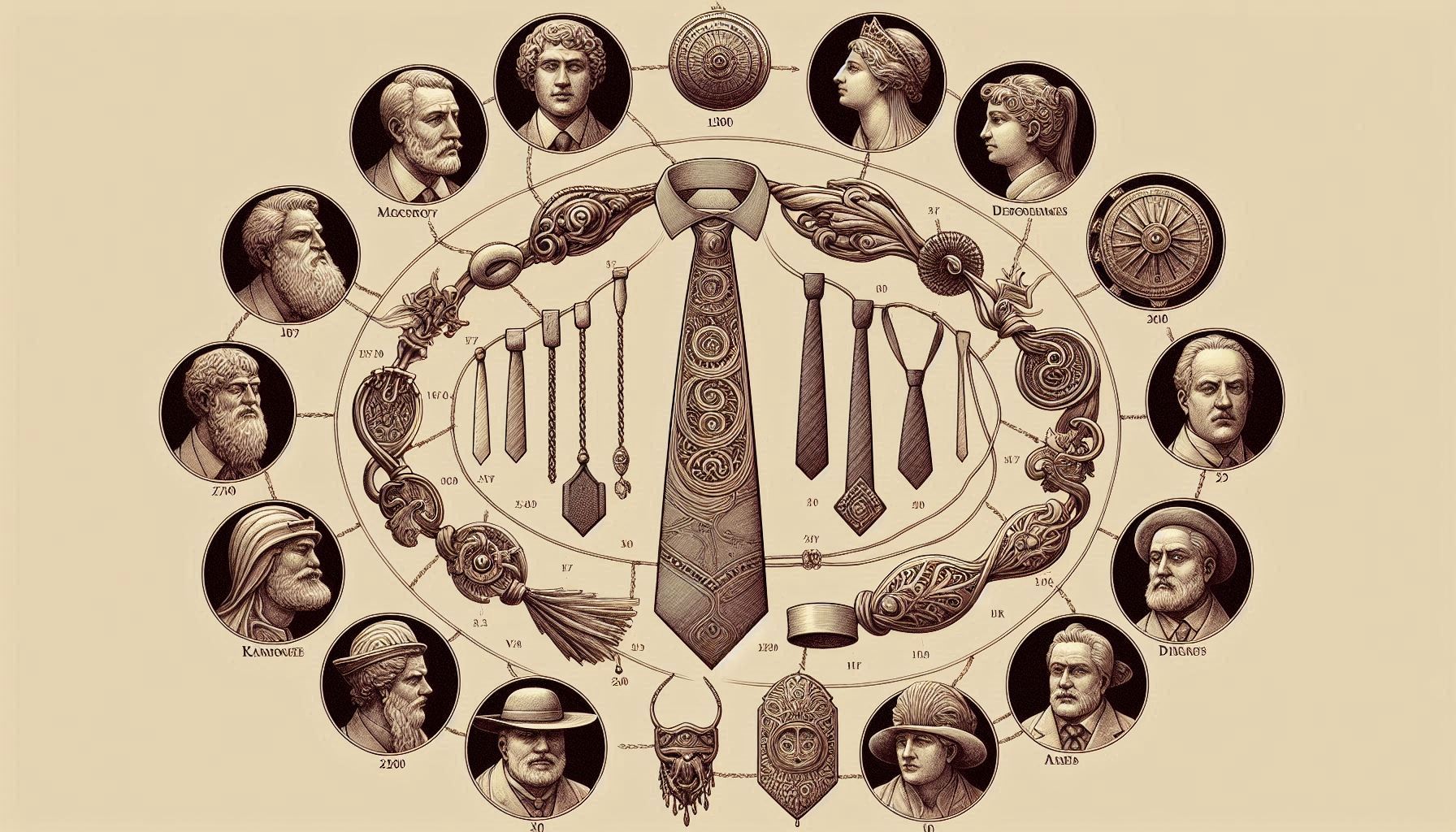Your cart is currently empty
The History and Origins of the Tie: From Military Tradition to Modern Elegance
The History and Origins of the Tie: From Military Tradition to Modern Elegance
The tie, this elegant and sophisticated accessory, is today an essential element of the male wardrobe. But did you know that its history goes back several centuries and that it finds its origins in military traditions? In this article, we will explore the origins and evolution of the tie, from its beginnings to its role in contemporary fashion.
The First Appearances of the Tie
The first traces of what would become the modern tie date back to the 17th century, in the midst of the Thirty Years' War. At that time, Croatian mercenaries hired by the French army wore a scarf tied around their necks. This simple accessory was used to hold the collars of their shirts in place and protect their necks from the cold. This "cravat", a term derived from the word "Croat" (Croatian), quickly attracted the attention of the French court.
King Louis XIII and later Louis XIV, fascinated by this distinctive style, adopted this scarf as a symbol of social status and refinement. Thus, the tie quickly became a fashion accessory among the French elite and spread throughout Europe.
The Evolution of the Tie Over the Centuries
During the 18th century, the necktie underwent several transformations. The styles of knots diversified, and the materials used to make them became increasingly luxurious, including silk and lace. In the 19th century, the necktie evolved to become longer and thinner, becoming closer to the shape we know today.
It was also in the 19th century that the tie knot became a true art. English dandies, famous for their keen sense of style, perfected the art of tying the tie with elegance. This attention to detail helped establish the tie as a symbol of elegance and respectability.
The Modern Tie: A Symbol of Style and Personality
In the 20th century, the tie became an essential accessory in the world of business, ceremony and fashion. New shapes, colours and patterns emerged, allowing men to express their personality through their choice of tie. The Windsor knot, popularised by King Edward VIII, is one of the many styles that marked this era.
Today, the tie continues to evolve, adapting to current trends while remaining a timeless symbol of elegance. Whether for an important meeting, a wedding, or a chic evening, the tie remains a must-have in the male wardrobe.
Conclusion: The Tie, A Timeless Accessory
From its humble beginnings on the battlefield to its current status as a fashion icon, the tie has endured through the centuries without ever losing its relevance. It is much more than just an accessory; it is a reflection of a rich history and constant evolution, adapting to each era while maintaining its role as a symbol of distinction and style.
So the next time you tie a tie, remember that you are wearing more than just a piece of fabric. You are wearing a centuries-old legacy, a piece of history that continues to reinvent itself day after day.



